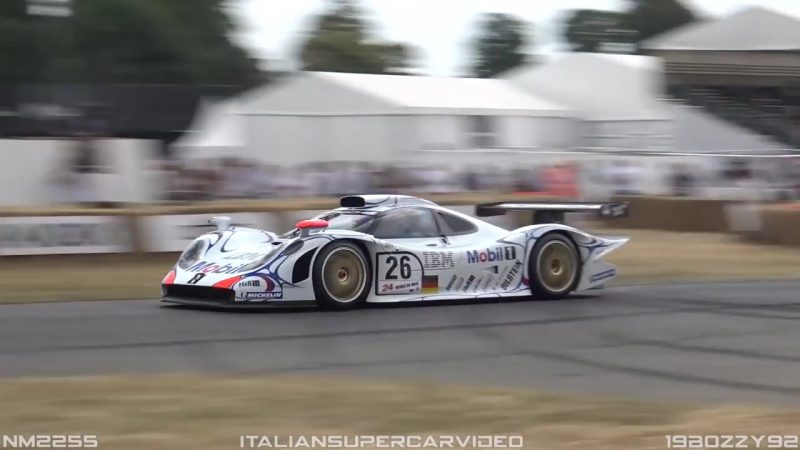For the 1998 season of the FIA GT championship, the rules regarding production car requirements were all but scratched. Finally, the second wave of GT1 machines were labeled for what they really were: thoroughbred prototypes.

The car, not surprisingly, accrues speed like nothing else.
Without regulations cramping the style of the designers, the latest GT1 could be everything they wanted the original production-based car to be. As such, The GT1-98 was so much more than a modified road car with its engine in the middle instead of the rear. This car featured Porsche’s very first full carbon fiber monocoque chassis, longer bodywork for better high-speed stability, and the six-cylinder engine’s displacement was bumped slightly. Now, with a sequential gearbox controlling the action (note the absence of a shift lever inside the GT1’s cockpit—quite a rare sight), the Porsche GT1 could take the fight to the advanced Toyota GT-One and Mercedes-Benz CLK GTR.
Rules Restrict Racing Results
However, FIA-imposed ruled regarding intake restrictors hampered the GT1-98’s performance considerably, and the normally-aspirated entrants, namely the CLK GTR, benefited from these regulations. As a result, the GT1-98 couldn’t quite match the Benz or the Toyota on raw pace, but due to superior reliability and a spree of rivals’ breakdowns throughout Le Mans 1998, the GT1-98 took first and second places. Even with their back against the wall and a significant performance handicap, Porsche proved their mettle once again when mechanical attrition became the deciding factor.
With high-fidelity audio giving us a better impression of this Porsche’s character, we can hear the twin-turbocharged six has no difficulty spinning the wheels off the line at Goodwood. Despite being technologically sophisticated, the GT1’s only nanny system is ABS. Without traction control, the boost overwhelms the rear slicks and rewards the listeners with a raspy bark and the titter of the turbochargers. In fact, this was the GT1-98’s weak point; the lack of engine flexibility limited its performance in slower corners and chewed up tires faster than its naturally aspirated rivals.
It’s fair to say that was likely its only weak point.
